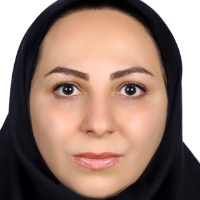Physical reinterpretation of Sheikh Shahabuddin Ahari's tomb garden and restoration of its original design
According to the available documents, during the Safavid period, the kings of this dynasty, including Shah Abbas I, traveled to the city of Ahar many times and started to create some innovations or complete the works left over from the previous ages. Arsen Sheikh Shahabuddin Ahri, as the only monastic-monument complex in the south of the city and the adjacent garden, is one of the most well-known among them, which has undergone significant changes in the development of its physical system from the 6th to the 11th century A.H. . At first, this complex functioned as a monastery, and then, during its life, sections such as a tomb, madrasa, mosque and garden were added to it and developed and evolved in a meaningful connection with other elements. Dealing with the above topic becomes important when we notice the historical descriptions of the said garden under the construction measures of Shah Abbas I, which is interpreted as Garden of Paradise, but currently only the name of that garden and its annexes are mentioned. It has remained and like many other works of the same period in Ahar, under the influence of various events, especially during the Qajar and contemporary periods, it underwent destruction and serious changes. These destructions were mainly intensified in the 1320s and the creation of new uses. In such a way that only arsenic and parts of the adobe fence around it remained in an area measuring 310×280 meters. In the present research, we tried to do this by relying on descriptive and pictorial documents, by answering the following question: the initial design of the garden of Sheikh Shahab-al-Din at the time of its discovery during the reign of Shah Abbas I Safavid and the process of its evolution after its construction. how has it been The representation of the body and the main structure of the garden of Sheikh Shahab-al-Din during its development should be discussed. In order to obtain the relevant model, library information and visual documents were used using the descriptive-analytical method. Also, it was not possible to obtain some anatomical details of the collection except through field studies and explorations. Therefore, this approach was a complement to some of the unknowns of this garden over time. This kind of dealing with the building requires a deep and detailed understanding of the existing situation and a careful observation of the building. Because every corner of the building and its surroundings can contain a message ready for the microscopic and mental look. In this way, the findings of the research were based on the four main systems of the Iranian garden - road, plant, building and water. Through the analysis, the details of the arrangement and spatial relationship of the various parts of the Sheikh's tomb garden, such as the division into four parts, the irrigation structure and the function of the buildings in the course of its creation and evolution, were obtained. Describing the physical features of the garden arranged on the Sheikh's tomb, while preparing the ground for future researches; It can help to recognize some of the neglected values in Iranian horticulture in Azerbaijan region.
- حق عضویت دریافتی صرف حمایت از نشریات عضو و نگهداری، تکمیل و توسعه مگیران میشود.
- پرداخت حق اشتراک و دانلود مقالات اجازه بازنشر آن در سایر رسانههای چاپی و دیجیتال را به کاربر نمیدهد.


